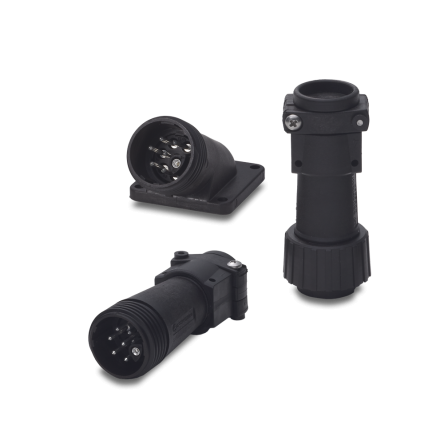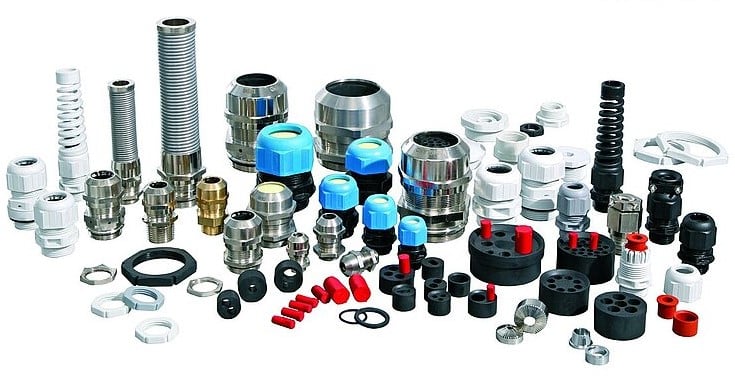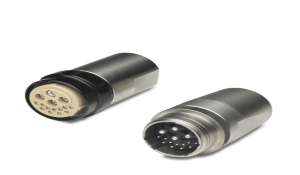At some point during the design of your machine or equipment, you will need to join two or more electrical components together. This could be in order to enable communication; transmit a signal or distribute power these are all needed for the proper functioning of your system or electronic devices. This is where industrial connectors come in. Industrial connectors are devices that are used to join electric circuits, the duration of this connection can be temporary or stay connected for almost the entire service life of a machine. Mostly we use connectors for things that need to be plug and unplugged often. When these connections are temporary it is best if they can be disconnected manually, but some do require the use of special tools.
Industrial connectors make it easier to assemble and manufacture machines. They are widely used for communication signals and power connections in machines, computers, and many electronic and industrial devices. Generally, there are six levels of "interconnection" - level 0 through 5. The 6 classifications start at the chip level (0) and go all the way up to connecting systems together (5) like your PC and monitor. 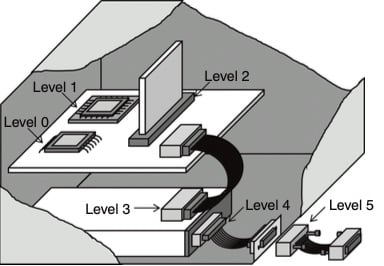
Ref: Connector Basics: Three Types of Electrical Connectors Article|March 2, 2021
We will quickly talk about the 4 most important levels for industrial equipment, control panel and machine building. Based on their termination ends, these connectors are classified into three areas:
1. Board-to-Board connectors: When you need to connect printed circuit boards (PCB) together without a cable, a board-to-board connector is ideal. Board-to-Board connectors can connect one PCB to another PCB and thus eliminate cables, and because of this, they are ideal for systems with limited space.
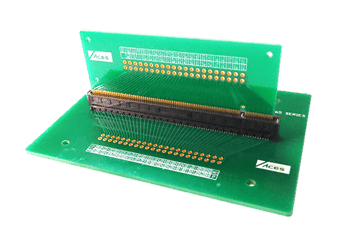
2. Cable-to-Cable/Wire-to-Wire connectors: Simply put, cable-to-cable connectors are used in connections where two wires or cables need to be connected together. In this case, one end of the connector is permanently fixed to the wire and the connector forms a separable interface. Now your wire can be plugged and unplugged whenever necessary.
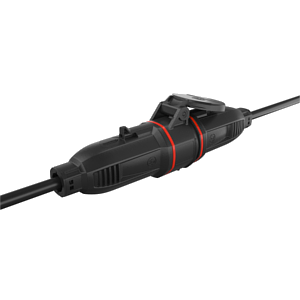 3. Wire-to-Board connectors: The wire-to-board connector is ideal in situations where a cable/wire is to be connected to a PCB. In most cases, the wire connections are like those used for wire-to-wire connection, but the PC board connections will press-in or soldered two-piece connectors.
3. Wire-to-Board connectors: The wire-to-board connector is ideal in situations where a cable/wire is to be connected to a PCB. In most cases, the wire connections are like those used for wire-to-wire connection, but the PC board connections will press-in or soldered two-piece connectors.
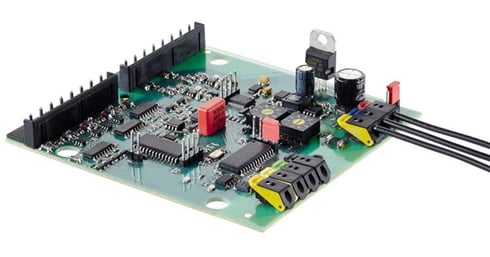
4. Panel Feed-through (connector and receptacle): Also called panel mount connectors and bulkhead connectors, this connection type is for feeding a wire or cable through a panel that will need the ability to be disconnected later. One of the important features of a connector like this is that they are typically going to have an environmental seal. Since these are usually found on an enclosed electrical or electronic cabinet the seal will usually carry an IP rating. Some are even potted so they remain sealed even if the mating connector is not plugged in.
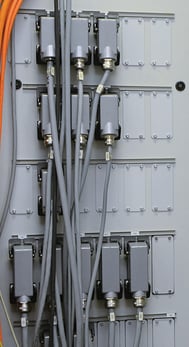
Since industrial connectors are bound for harsh and rugged environments, they can be susceptible to failure and you need to look out for device damage, cracking, wearing, and fretting fatigue. In order to avoid a machine disaster, it is important that you are aware of the factors to consider when choosing an industrial connector. This is exactly what you will get by the time you're done reading this article - the ability and confidence to choose the right connectors for your devices.
Quickly educating yourself, or asking the following questions, before connector selection will put you on the path to success.
1. Wire gauge
A wire gauge measures a wire’s cross-sectional area, and it determines the resistance, weight, and amount of safe electrical current a wire can carry. Usually, the larger the cross-sectional area, the lower the resistance and the greater the amount of current the wire can carry. Therefore, a wire with a smaller gauge (has a larger cross-section) can carry more power than one with a larger gauge number. It is important to take this into account and use the proper gauge wires that match your connector and electrical parameters.
Quick Note on Wire Gauge - North America and other parts of the world use the AWG (American Wire Gauge). In Britain, it is measured in SWG (Standard Wire Gauge), while Europe and some other parts of the world use mm² (IEC 60228) which is a reference to the wire cross section, the amount of copper that can carry current, as opposed to a "wire diameter" that includes the insulation.
2. Current rating
Current rating is the level of current that an appliance or other device can carry continuously, with complete safety. Ensure that the connector’s current rating matches the current-carrying capabilities of the individual terminals being connected. You may also want to make sure your device has the proper safety approvals for the jurisdiction (location) your machine will be used in, such as UL, NFPA, and CE.
3. Environment
When selecting a connector type, it is very important to consider the environmental conditions because not all connectors can function effectively under certain conditions such as extreme temperature, submersion in water, and other unusual environmental conditions. Industrial connectors can be ruggedly designed with metal housings, special exterior coatings and innovative materials for sealing and anti-mold. Connectors should also be able to protect the signal from electromagnetic interference, not add to EMC complications. Connectors with plated metal shells or conductive gasket help in this regard to protect components from radiated Electromagnetic Interference (EMI). Electromagnetic compatibility (released energy) from surrounding devices is also a consideration of the equipment you are building, if it is a power connector you may also need a shield to make sure you are building an EMC compliant machine.
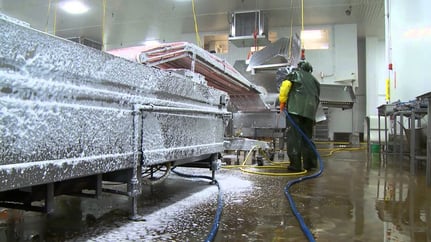
4. Standards approval
Try to ensure that the electrical connector system has been tested to meet the standard requirements of the local governing approval agency. In North America it is UL approval and NFPA that you will be answering to. In other parts of the world you will find IEC, CEE, and CENELEC are the standards you want to follow. There are also industry specific connector standards for the automotive industry like SAE, or the semiconductor industry, SEMI agency. Examples of standard tests performed on connectors include:
- UL 1977 - Component Connectors for use in data, signal, control, and power applications
- NFPA 70 NEC Article 110.3 - A device that establishes a connection between two or more conductors w/o the use of solder
- EIA-364 - Electrical Connector Performance Test Standards
- GMW 3191 – Automotive connector test and validation specification
- IEC 60512 - Connectors for electrical and electronic equipment - Tests and Measurements
- MIL-STD-1344A – Military standard, test methods for electrical connectors
- SAE USCAR2 - Performance specification for automotive electrical connector systems
- SAE USCAR21 - Performance specification for Cable-To-Terminal electrical crimps
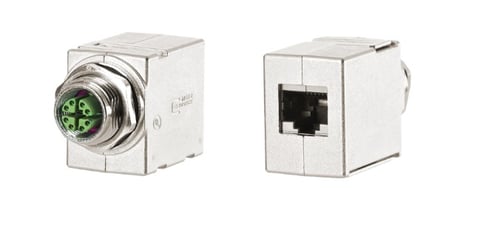 A Cat.6A connector with zinc die-cast housing, suitable for application in the railway industry
A Cat.6A connector with zinc die-cast housing, suitable for application in the railway industry
5. IP Rating
An IP Rating describes the level of protection provided by a connector against the intrusion of solid objects and liquids. An IP Rating usually has two numbers: The first number represents the level of protection from solid materials and the second number represents the level of protection from liquids. A third letter describing other information such as impact resistance, can be used, but is often omitted.
When choosing exposed external connectors that could allow water or particles to enter the equipment, the connector selection should include an IP rating. You will need to review the applications environmental conditions to ensure a high enough IP rating is considered. This is referred to as the required minimum protection based on the application's intended use. The higher the IP number, the more it is sealed from the outside environment.
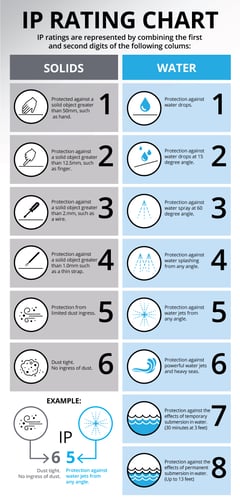
6. Engagement force
The effort needed to mate, join, or engage the two populated electrical connection sides is referred to as engagement force. Total engagement forces for some connection families in high circuit count applications can reach 50 pounds or more, which may be too much for some assembly operators or in situations where the electrical connectors are hard to access. In contrast, a high engagement force may be preferred in heavy-duty applications so that the connection can endure frequent jostling and vibrations in the field.
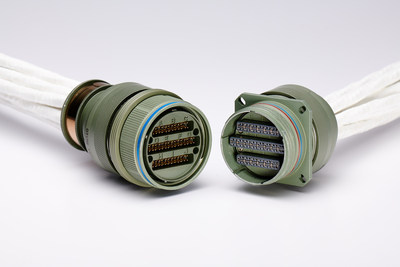
TL; DR
In too much of a hurry to read it all? Here's a summary:
- Industrial connectors are devices that are used to join electric circuits to enable communication, signal transmission and power distribution that are required for the proper functioning of your machine.
- Generally, there are six levels of interconnection within industrial connectors - level 0 through level 5, each situated in one or more closed paths to perform a desired electrical or electronic function.
- Industrial connectors are classified into four types based on their termination ends: board-to-board connectors, cable-to-cable connectors, wire-to-board connectors, and panel feed-through.
- The 6 important factors that you should review next time you choose an industrial connector are wire gauge, current rating, environment, standards approval, IP rating, and engagement force.
When selected properly, industrial connectors drastically reduce the time, effort and manpower needed for the manufacturing, assembling and installation of your devices, components, and wiring.
If you find our article on Choosing the right connectors useful, you may also want to check the various types, components, and applications of industrial connectors. We would love to have you join other machine and electrical control panel builders on LinkedIn where we share insights and stories that are helping engineers build awesome products and get those products to the market faster.
Should you need help in any way for your industrial connectors needs or other electrical control components, feel free to reach out to us.

